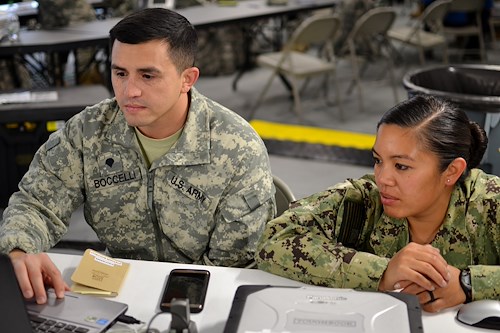

PAPA AIR BASE, Hungary — The 7th Mission Support Command, of the 21st Theater Sustainment Command, is implementing an innovative technique in humanitarian aid and disaster relief mission planning.
The new approach, called Perspective Integration, will be integrated into exercise Anakonda Response 2016.
Exercise Anakonda Response 2016 is a joint, multinational evaluation exercise involving participants from the Hungarian Ministry of Defense and local governmental officials; U.S. military; the DOD’s Defense Threat Reduction Agency; the U.S. Army Peacekeeping & Stability Operations Institute; and other governmental and humanitarian bodies.
The combination of these separate contributors play a role in the development of the assignment and in planning how the participants should react to the scenarios of the exercise.
A guidance notice written by the Geneva Centre for the Democratic Control of Armed Forces (DCAF), and the Organization for Security and Co-operation in Europe (OSCE) states, “…Mechanisms need to be in place to ensure that individual personnel, as well as the armed forces as an institution, are on track in integrating a gender perspective. This means addressing gender issues in training, planning and operations, and understanding the different experiences of women and men as service personnel…”
This event provides the ideal opportunity for implementation of the new practice.
“Using the Perspective Integration method while planning a mission or exercise requires mission planners to account for cultural factors in how gender roles affect men, women, boys and girls differently in a disaster,” said Samantha Turner, a civilian Supervisory Staff Administrator for the 7th MSC’s 446th Movement Control Battalion.
During the training prior to Anakonda Response 2016, Turner presented a class about the technique, which is a tool that leaders and Soldiers can use to “plug the holes in [their] plan.”
She explained that the process overlays the existing planning and is used to determine how differences in social norms affect the responses to a disaster or conflict.
For the U.S. Army Reserve’s 7th MSC, the goal is to use Perspective Integration to ensure that responders do not inadvertently make the problem worse, Turner said.
“Even in your family, you have a different role than your spouse,” she said. “Conflict affects children differently than adults.”
The technique uses an acronym called PAUSE: Perspective Analysis of Unseen Sides of the operational Environment. The idea is that planners should PAUSE and consider gender roles and ask how each group — men, women, boys and girls — will be effected differently.
“You will actually be preventing mistakes that will decrease the security in your situation,” Turner said.
Turner highlighted that civil affairs planners play a key role, because they are trained to understand different cultures around the world, stating that this method is already being applied by the militaries of other NATO ally and partner countries.
In fact, some have been using Perspective Integration into all of their exercise planning.